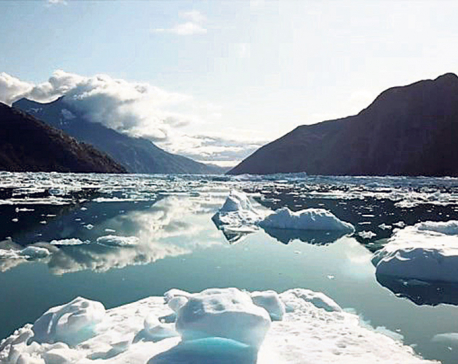
OR
Nepal’s natural diversity is perhaps exemplary for the whole world. The country has Himalayas, mountains, hills, valleys and the plains all within its small area. And it is also the country of the wetlands—which include rivers, lakes, swampy rice fields, ponds and waterlogged areas—covering around six percent of Nepal’s surface area.
Needless to say, wetlands are a lifeline for the ecosystem. According to various studies, an estimated 750,000 hectares of wetlands exist in Nepal and over 85 percent of Nepal’s agrarian communities rely on wetland resources for food, fodder fiber, folk medicine, navigation and fishing.
According to a study, total of 21 ethnic communities are traditionally dependent on wetland resources for their livelihood. They serve as food basket and means for income generation for many marginal and indigenous communities as well. Given these benefits, wetland conservation should have been the priority agenda of the country. But as things stand, this is not the case.
According to the National Biodiversity Strategy and Action Plan (NBSAP)-2014, the wetlands have shrunk by 5.41 percent due to expansion of croplands. Lack of clarity over policies and management responsibilities, inadequate technical, financial and institutional capacities, population growth and the increasing demand for resources have led to diminished areas of wetlands.
Conservation activists are worried about the state of neglect toward wetlands management and lack of measures to halt their shrinkage and degradation will make the situation worse in the days to come. Like must public lands, wetlands have also suffered encroachments for human settlement and infrastructure development, extraction and diversion of water for irrigation, siltation, over-harvesting of resources including commercial fishery and urban expansion, among others.
Preservation of wetlands is of paramount importance for countries like Nepal for two reasons. First, these wetlands contain many threatened and endangered flora and fauna and provide excellent ecological habitats for internationally important winter migratory birds and other wildlife.
Nepali wetlands are home to at least 230 indigenous fish species, 27 percent of nationally threatened bird species, 85 percent of endemic vertebrates and about 24 percent of government-protected plants. Besides, wetlands have cultural significance too. Water bodies—such as ponds, lakes and rivers—are considered sacred in Hinduism. Second, rising threats of climate change has resulted in melting of the glaciers and snows from the Himalayas.
Few wetlands that we have can become the source of drinking water for the people during the times of weather extremes. But these wetlands remain in neglect. One reason, often attributed by the conservationists, is that Nepal does not have a separate legislation to manage and monitor the wetlands protection. If that is the case, separate law should be formulated. And local and provincial governments should make protection and conservation of wetlands their priority agendas.
Local Government Operations Act (2017) has empowered local governments to carry out activities for protecting and safeguarding wetlands. Thus local governments are legally obliged to fulfill this responsibility. Nepal has been a party to the Ramsar Convention on wetlands since 1989. Thus Nepal also has an international obligation to save its wetlands.
Federal, provincial and local governments should no longer undermine the importance of wetlands, which are vital for sustaining ecosystem and which are also the source of livelihood for many Nepali people.
You May Like This

Road to apocalypse
Nepal is one of the most vulnerable countries to climate change. Major climate stressors here are rising temperatures, increased floods,... Read More...

Climate change threatens our survival
Hindu Kush Himalaya Assessment report released by International Centre for Integrated Mountain Development (ICIMOD) raises alarm for the countries lying... Read More...

Prez inaugurates new biodiversity garden
KATHMANDU, Sept 22: President Bidya Devi Bhandari on Thursday inaugurated a new Biodiversity Education Garden inside Godavari's National Botanical Garden. ... Read More...







Just In
- NRB to provide collateral-free loans to foreign employment seekers
- NEB to publish Grade 12 results next week
- Body handover begins; Relatives remain dissatisfied with insurance, compensation amount
- NC defers its plan to join Koshi govt
- NRB to review microfinance loan interest rate
- 134 dead in floods and landslides since onset of monsoon this year
- Mahakali Irrigation Project sees only 22 percent physical progress in 18 years
- Singapore now holds world's most powerful passport; Nepal stays at 98th











Leave A Comment